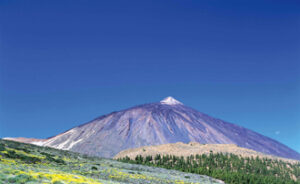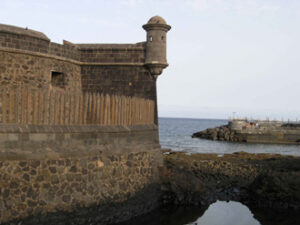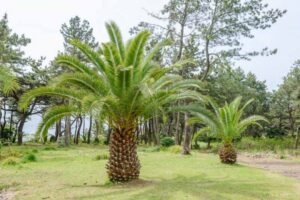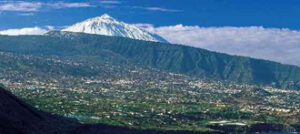Αρχική » Άρθρα με ετικέτα 'Spanish Schools' (Σελίδα 3)
Αρχείο ετικέτας Spanish Schools
Canarian palm
An endemic tree growing all over the Island
The majestic Canarian palm tree (Phoenix canariensis) can grow to heights of up to 30 m (100 ft) and is an endemic species and symbol of the Canary Islands. Its ability to adapt to different ground conditions means you will find it all over Tenerife, from the coast to altitudes of roughly 500 m (1,640 ft) above sea level, both in the wild and ornamentally. Its sap is used to produce palm honey, whilst its huge leaves are great for sweeping the streets.
Red bugloss
An endemic plant species growing in Teide National Park
The curious shape of the red bugloss (Echium wildpretii) and its bright flowers stand out against the volcanic landscape of Las Cañadas del Teide, the only place in Tenerife where this shrub grows. The red bugloss is endemic to the Island and can grow up to 2 m (6.5 ft) high, making it the highlight of many pictures and post cards, especially in springtime.
El Valle de la Orotava
Overlooked by the peak of nearby Mount Teide, the Orotava Valley descends towards the sea amidst a spectacular landscape of green palm groves, black volcanic soil, and the deep blue of the ocean. The Orotava Valley, also known as the Taoro Valley, a name which the Guanches gave to this region, is a wide depression in the north of the island of Tenerife which has the Teide at its back and the ocean at its feet. It contains three towns – La Orotava, Puerto de la Cruz, and Los Realejos – which share this geological, scenic, and agricultural area. (περισσότερα…)
Teide National Park
 The Canary Islands and Tenerife’s most visible landmark, Mt Teide, have been a point of reference for those who sailed between the Straight and the Atlantic coast since antiquity. On a world-wide level, the park is one of the island’s few volcanic areas featuring ecosystem zones above the timberline, giving rise to unique ecosystems such as the alpine broom, and alpine ecosystems.
The Canary Islands and Tenerife’s most visible landmark, Mt Teide, have been a point of reference for those who sailed between the Straight and the Atlantic coast since antiquity. On a world-wide level, the park is one of the island’s few volcanic areas featuring ecosystem zones above the timberline, giving rise to unique ecosystems such as the alpine broom, and alpine ecosystems.
The use of plant species, water and snow as well as the extraction of minerals for diverse purposes marked a period of exploitation of the area’s natural resources which came to an end when the area was declared a National Park in 1954, via a regulation governing the use of protected natural areas, and particularly, the Law on Reclassification of 1981 and the Use and Management Master Plan of 1984. (περισσότερα…)
History of Tenerife, Canary Islands
 The Canary Islands have always been present in myth and legend, like those mythical lands beyond the Pillars of Hercules in the Strait of Gibraltar, the gateway to the Mare Tenebrosum. Classical writers have placed Paradise, the Elysian Fields and the Garden of the Hesperides here, although one of the first reliable accounts of the islands we owe to Pliny the Elder, in the 1st century AD.
The Canary Islands have always been present in myth and legend, like those mythical lands beyond the Pillars of Hercules in the Strait of Gibraltar, the gateway to the Mare Tenebrosum. Classical writers have placed Paradise, the Elysian Fields and the Garden of the Hesperides here, although one of the first reliable accounts of the islands we owe to Pliny the Elder, in the 1st century AD.
When the Spanish conquistadors arrived in Tenerife, the island was divided into nine small kingdoms, or menceyatos: Taoro, Abona, Güímar, Anaga, Tegueste, Tacoronte, Icod, Daute and Adeje, with a king, or mencey, in charge of each, advised by his council of elders, or tagoror. The Guanches, the pre-colonial inhabitants of Tenerife, wore animal skins and, as far as the documented evidence goes, had not dominated the art of navigation. However, they did have elaborate burial rites for their dead, with mummification techniques that proved very effective in some cases. (περισσότερα…)





